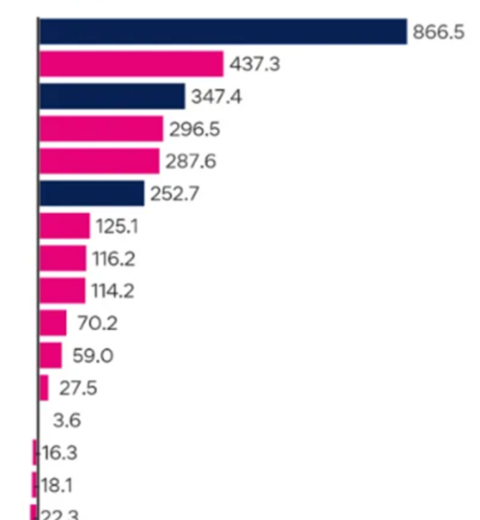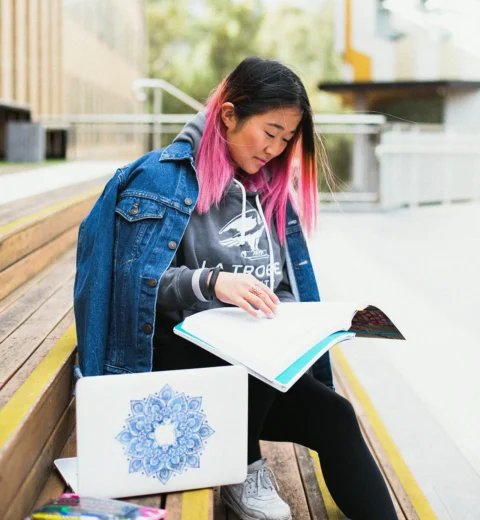Published 16 October 2023 I By Ewa Staszewska I Article source:SBS
Melanie Trivett sat down at her desk and started sobbing.
As her chest tightened, the suffocating feeling that had been building up, especially over the final ten weeks, had “become too much”.
“I’d never had panic attacks in my life and one morning I just broke down crying, sitting in the seat shaking,” she told SBS News.
“I couldn’t work out what I was going to do, how to even start the day.”
Months before the 2019-2020 bushfires, Melanie had been promoted to general manager at a primary healthcare provider in Melbourne that services regional areas.
Then the pandemic struck.
Overnight, her husband’s work stopped. She was homeschooling two children and adapting the roles of the 60 staff under her supervision to the new COVID-19 mitigation rules.
When she contacted her general practitioner in May 2020, they told her she was “burnt out” and on the verge of being hospitalised.
While not everyone’s experience with burnout is as serious as Melanie’s, many workers report similar feelings of mental depletion.
Burnout affects two in three Australian workers, according to a nationwide survey of 1,017 workers carried out by NSW Work Health and Safety (WHS) in January 2023.
Three years later Melanie says that, as odd as it sounds, she’s “glad she collapsed”, because it forced her to invest in herself and prevent the same feelings persisting into the future.
What is burnout?
Australian National University mental health director Lyndall Strazdins said the phenomena of workplace burnout is a “cluster of reactions” to sustained stress.
“It’s the emotional and physical reactions people have when they’ve been under a great deal of pressure and stress,” Strazdins said.
The clinical psychologist said there was a lot of debate around how to conceptualise burnout as it shared many symptoms of other psychological diagnoses related to depression and anxiety.
Burnout is “a combination of mental and physical symptoms such as exhaustion and fatigue” and a regular sense of disengagement, Strazdins said.
It’s not just doing “too much for too long”, she explained; burnout is connected to other psychosocial hazards in the workplace that impact mental health.
In some cases this can include reacting to “bullying, harassment, discrimination and just general unfairness in workplaces,” all of which “takes a toll on people”, Strazdins said.
into understanding burnout said it impaired “job performance, resulting in decreased productivity” and a lack of fulfilment, which can reduce motivation and sense of purpose.
Outside work, burnout can physically impact conditions such as hypertension, heart disease and a weakened immune system, as well as leading to other mental health disorders impacting overall quality of life.
For Melanie, the loss of ability to function was scary, and she took six weeks of leave to focus on her health.
She said the experience also rattled her husband and kids.
“They’ve known me to always work pretty hard and to function pretty well, then to see me go downhill … just getting out of bed and having breakfast was an achievement,” she said.
“And all of a sudden when you don’t have the capacity to think or to manage or to plan, you lose all of those executive-type functions.
“You start to wonder what that means for you and your family. And when you’re in the thick of it all, you’re just not sure if you’re going to find your way out.”
Avoiding burnout without quitting your job
Six months later, Melanie started a course at the Balance Institute, which aims to help ambitious female professionals achieve work-life balance without burning out.
Balance Institute founder and chief executive officer Jo Stone empathises with many of the women who come through her eight-week coaching program.
At 31, she had reached her career goal of chief marketing officer, built her dream home and was married with two young daughters. But she was unhappy, exhausted and drowning in guilt.
So she “burned it all down”. She quit her job and sold the house. Yet the nagging feeling remained.

“I’d changed everything outside of me, but there was nothing left to change,” she told SBS News.
“And so what if the road to escaping burnout isn’t just about changing jobs or changing our circumstances, but actually modifying the one piece that is ever present in our lives, and that’s ourselves.
“The answer is not quitting your job because you will go and find another job and then it’s the same person going between jobs.”
How can you beat burnout?
Setting boundaries is key to achieving work-life balance and avoiding burnout, according to Curtin University’s head of marketing and management Julia Richardson.
Richardson recommends “having clear boundaries between work and non-work life”.
Examples include establishing rules “like not reading emails after 6pm”, she told SBS News.
An expert in careers and work-life balance, Richardson said it was important to commit to your rules and disconnect from work, including making time for hobbies and other pursuits.
“For some people like me, it’s cycling. For others, it’s just sitting with a book,” she said.
“You’ve got to find what works for you and make a commitment to that.”
Stone also encourages clients to set boundaries.
“It’s learning to say ‘no’, and it’s learning how to communicate in a way that you’re actually heard,” she said.
Developing a sense of self-worth outside of work is also key, she said.
“Many of us have grown up believing that our worth is based on how much we can do,” she said.
Melanie’s sense of calm
Melanie now wakes up each morning with a sense of calm. She says she’s more patient, has got her groove back at work and is developing the skills of others around her.
She encourages workers to be kinder to themselves and challenge the ideas that might be leading to burnout, saying it’s okay to be selfish and take care of yourself.

“There is another way to live your life. It doesn’t always have to be a state of hustle … there is a way to slow down,” she said.
“You can be effective at work and still be a great mum and still be a great partner and still contribute to society … You can find a balance.”




